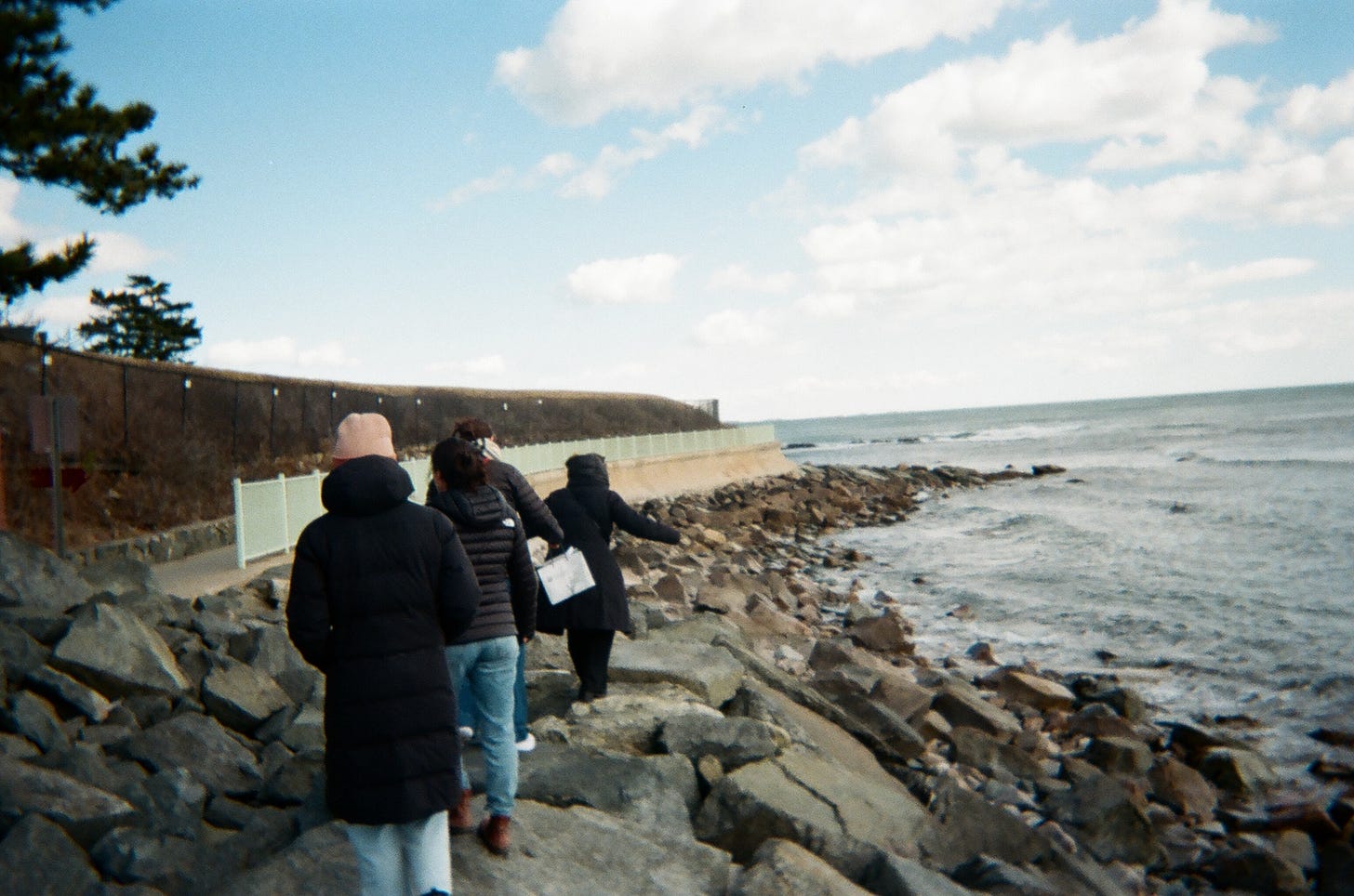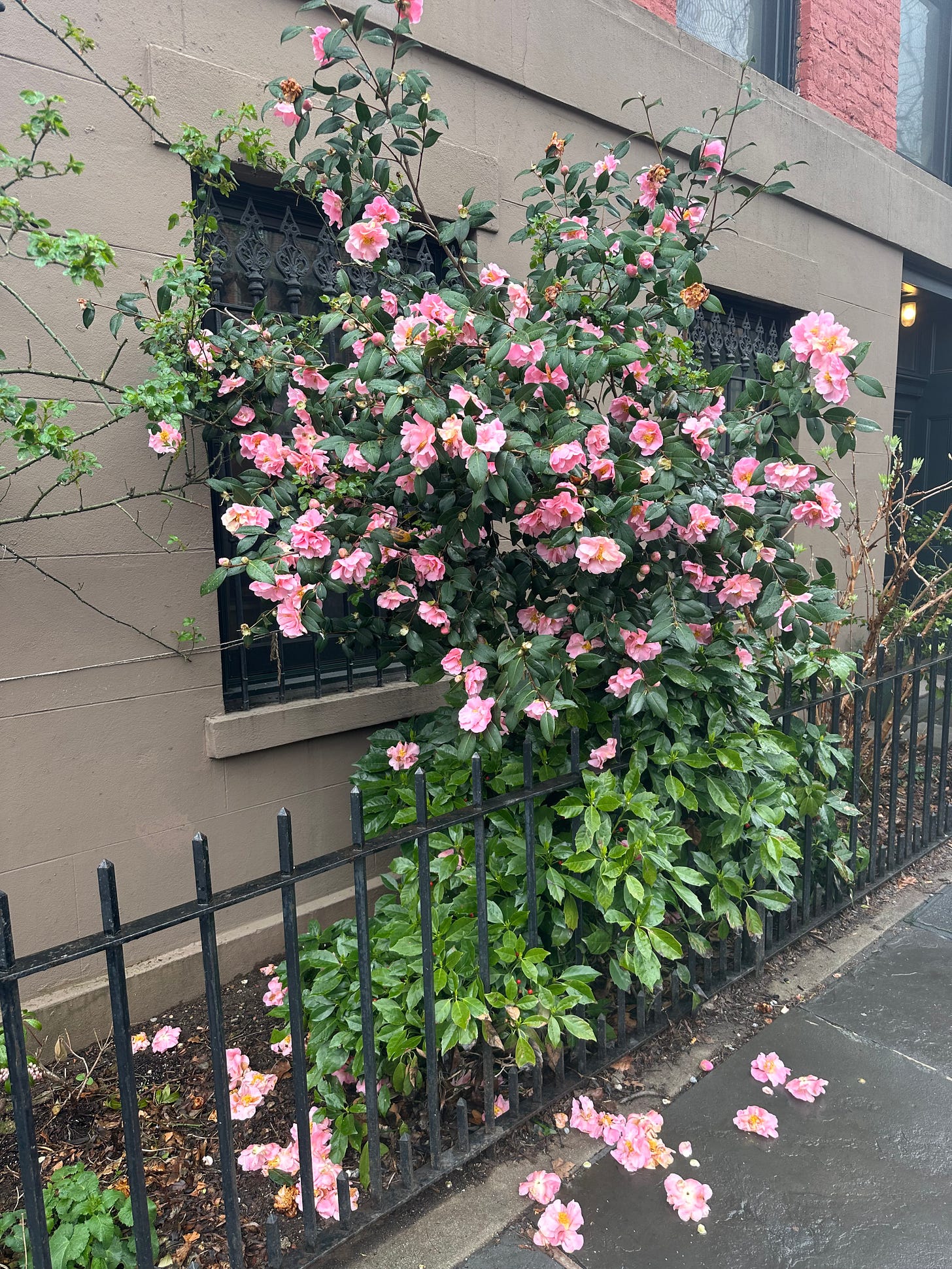How working on a screenplay re-wired my brain
Cross-training, plot allergies, and trying something new
Dear friends,
Growing up in a family of athletes, I learned about cross-training—or how one activity could help you get better at another—quite young.
Playing lacrosse helped my hand-eye coordination so I could be a better volleyball player. Learning hip-hop choreography—yes, I was the youngest in the back corner—helped my core and flexible so I could run longer on the soccer field without getting hurt.
Is there such a thing in the arts? Would writing in another format change my approach to writing overall? Would it change the way I think?
A few months ago, I decided to find out by taking a screenplay writing class with my friend Manola (the lovely writer behind
).
Things I learned
It would be too hard to squeeze a months long course into one newsletter, so here are a few highlights.
To learn to write a screenplay, you need read them. Watching movies is helpful, but not the same. (It seems obvious, but still takes time… otherwise it would be like trying to run a marathon without training, or trying to write a novel without reading any.)
Even better: read a screenplay for a film you haven’t seen yet, so you can experience the story on the page without relying on memory or visuals.
There are two types of ‘storylines’—Goal and Relationship. For example, in Finding Nemo, Marlin’s goal is to find his son (goal storyline), and along the way he develops a friendship with Dory (relationship storyline).
Everyone uses the same formatting and rules. Courier. 12-point. This constraint reminded me of school uniforms: by eliminating endless choices about how things should look, it frees up creative energy to focus on the story itself.
Reading and workshopping others’ work, no matter the genre, helps you develop taste. We can often point out what we like or don’t like in something else long before we can discern what’s good or bad in our own work.
Dialogue is everything. It needs to be sharp. As a novelist, it was a wake-up call to learn my knack for lengthy descriptions of a character’s inner turmoil won’t make the final cut.
No matter what format or genre or style—if you want to tell a story, you have put pen to paper, or fingers to keyboard, and DO IT.
So, can you cross-train your brain?
Yes. The class definitely forced me to develop new muscles.
I learned to map out ideas and diagram scenes. I learned to think about characters differently, asking not just “How do they feel? What do they think?” but, “How does what they feel or think cause them to act?”
It was a more formulaic way to write than I’m used to. I like to dilly-dally in the unknown, whereas in screenplays, ‘outlines’ seem to be king.1
While it’s too soon to tell how thinking about stories in this new way will ultimately affect the stories I write next, I’ve started to see things slightly differently….
I don’t feel as ‘allergic’ to plot as I did before. I used to think that an outline would be too constraining, but now I’m seeing how different mapping techniques and framing techniques can help a story get somewhere, even if the ‘where’ changes along the way.
I was also reminded again of the importance of collaboration. During the course, we workshopped each other’s ideas, screenplays, and story maps every week. In an MFA, workshops can sometimes be useful or sometimes kill ideas—but in this course, it felt low-stakes. Instead of critique sessions, it felt more open like a writer’s room—or at least what I’ve read about them. It turns out multiple brains can grow a story in a way that one mind alone cannot.
And while I didn’t finish a screenplay during the course2, I do have a lot of story maps with ideas, new tools in the writing toolbox, a tired—exhausted in a good way—brain, and the lingering curiosity about a character who gets surprised by her own retirement party.
Thanks for reading,
Charlee
Other inspiration & tidbits
A youtube video on screenplay writing formatting if you’re curious!
A PDF of the Bridesmaid’s screenplay. It was one of my favorite I read during this class…
10 Tips on screenplay writing from Phoebe Waller-Bridge (Fleabag & Killing Eve)
This is a deep cut, but I love the way writer Matt Wyatt describes screenplay writing in his comment on George Saunders’ substack on the same topic.
At least in this particular course, we spoke a lot about story maps, outlines, plot, etc. There are probably many, many ways to write a screenplay!
The hubris of my winter self to think that I’d be able to do so while working a full time job and getting married, smh







Working on an adaptation of Victim with a screenwriter at the moment and loving it for many of these reasons. Teaching me a ton about plot, characterization, momentum, and mashing up scenes so that they play better for the larger story/audience. Glad you got a lot out of your experience, too!